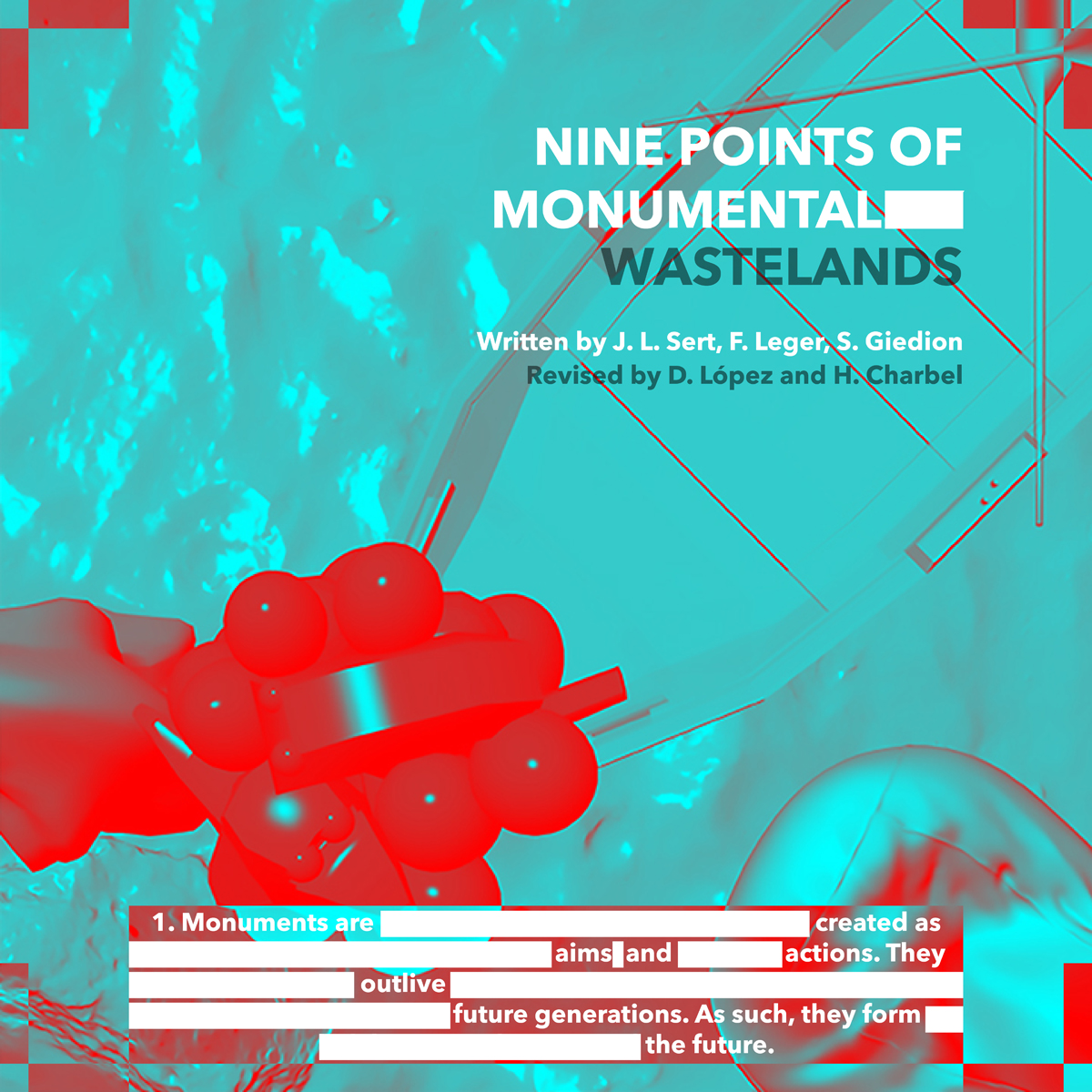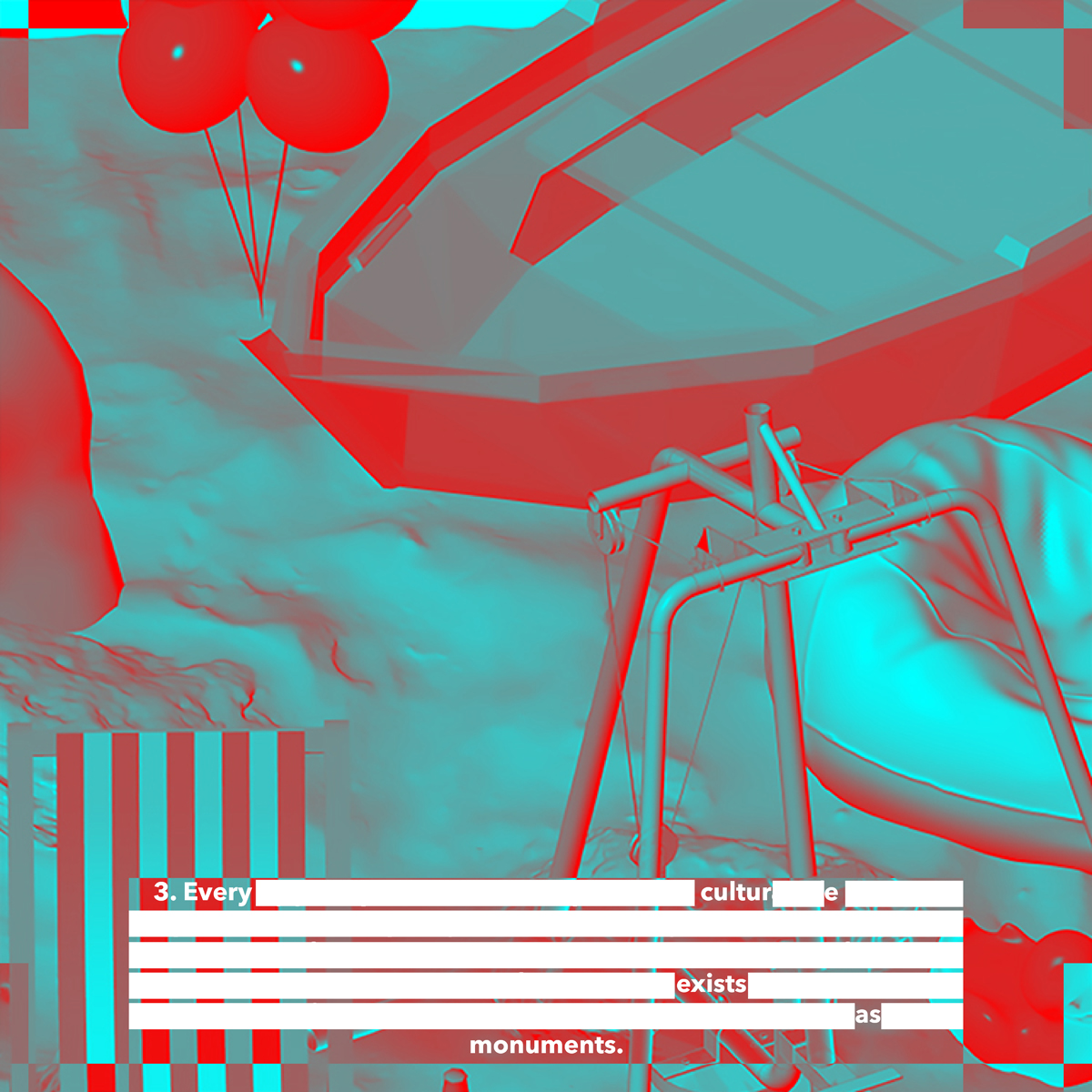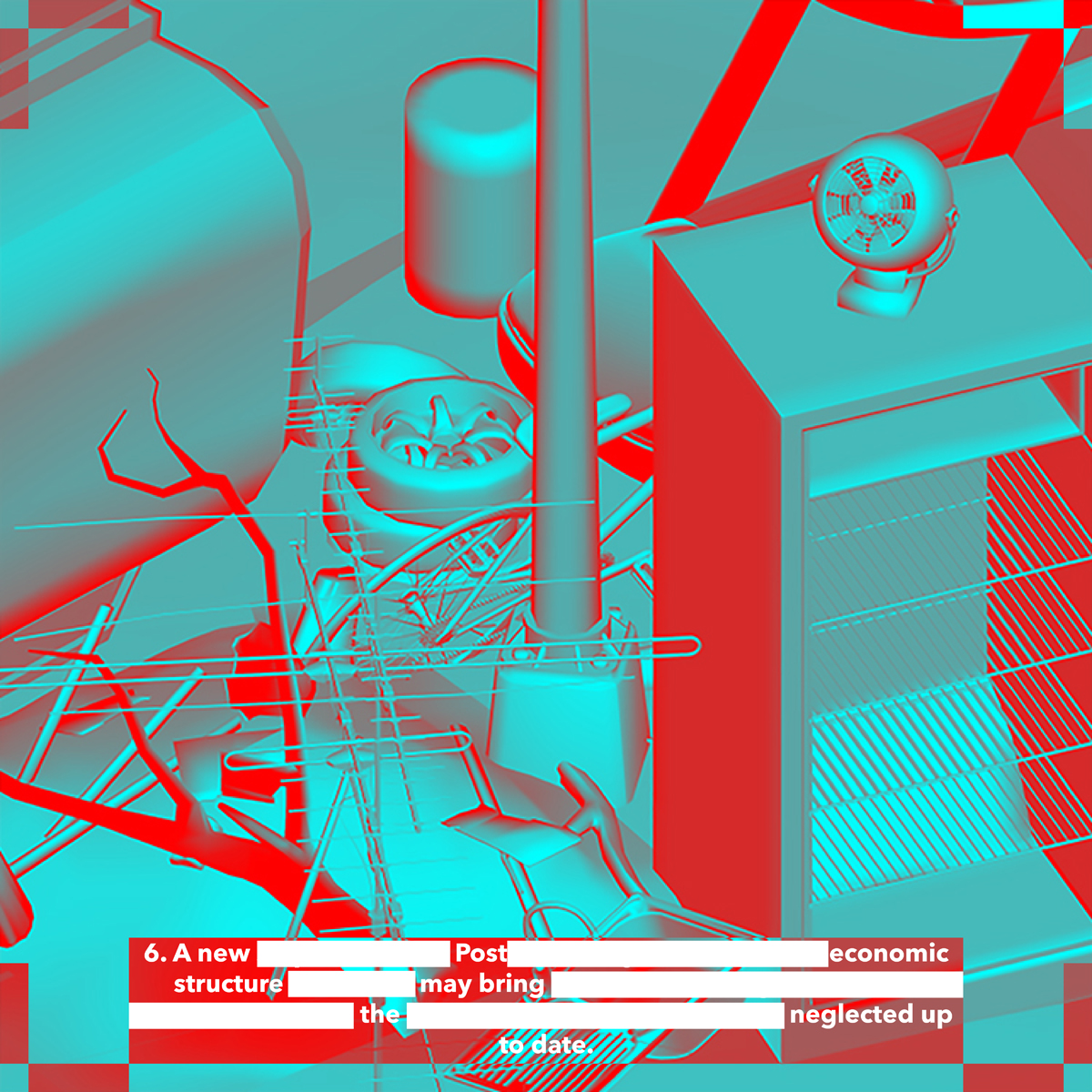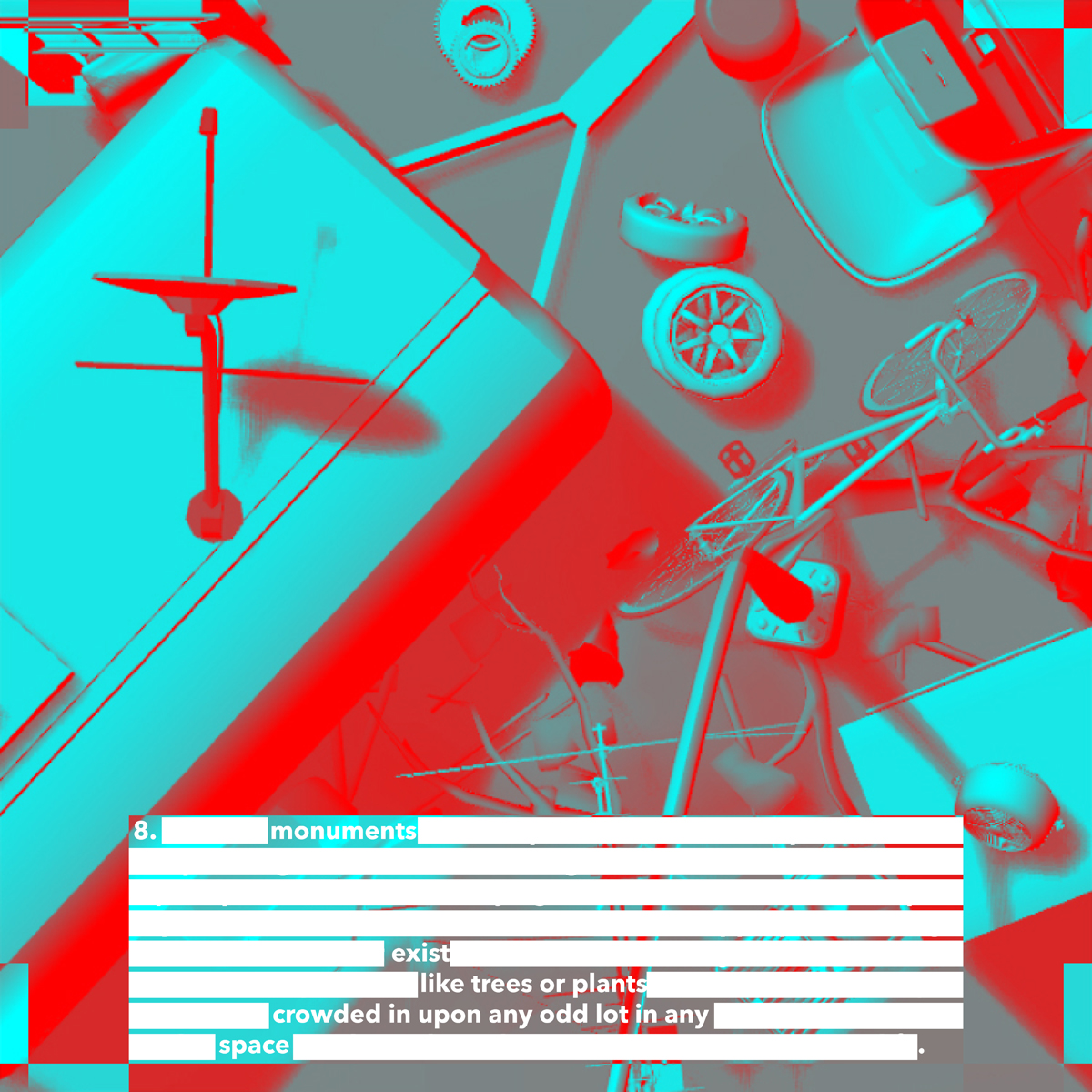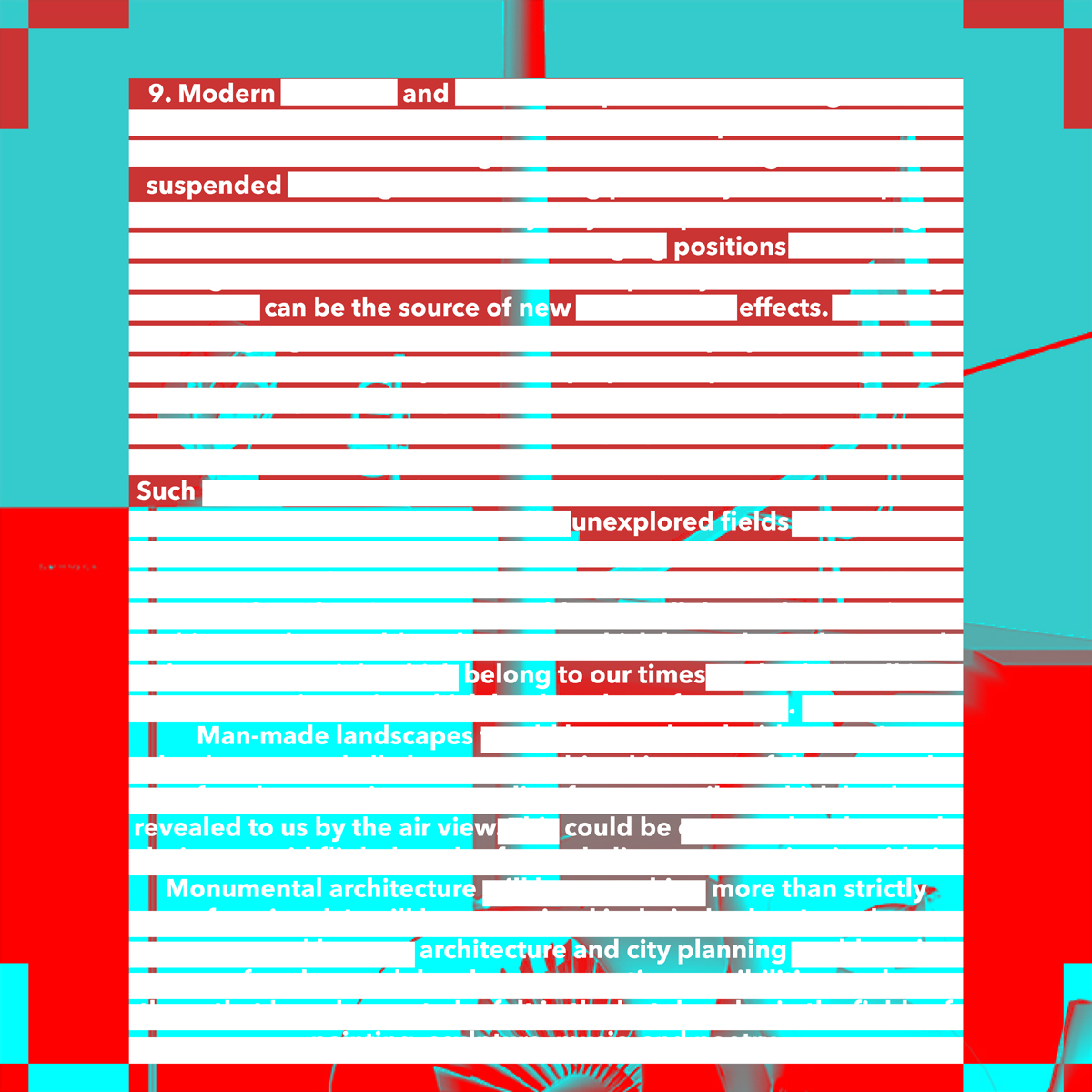About the Artist
Pareid approaches design from various fields and contexts addressing topics related to climate, ecology, human perception, machine sentience, and their capacity for altering current modes of existence.
Led by Déborah López and Hadin Charbel, practice and pedagogy intermingle at the Bartlett School of Architecture in the cross unit Research Clusters 1 and 20 entitled “Monumental Wastelands” where climate fiction is used as a vehicle for engaging various ecologies and challenging current economically profitable models through imminent fictions (if).
Through research and interdisciplinary techno-bashing, projects are narrative driven while varying in scales and mediums, often positioning themselves within a socio-political discourse as a tool for disruption.
About the Works
Originally published in 1943 by Jose Louis Sert, Fernand Leger, and Sigfried Giedion; the 9 points of monumentality define a monument as “intended to outlive the period which originated them, and constitute a heritage for future generations…forming a link between the past and the future”. In 1937, the World’s Fair in Paris saw the the USSR and Nazi Germany face off in a battle of what were to be monuments in pavilion form; a kind of monumentality that the authors of the nine points later critiqued as lacking ‘expression of man’s highest cultural needs’.
With this thought and under a contemporary lens, the question is if we haven’t already begun and are still in the process of making new forms of monuments through our collectivity. A digital dumpster dive into the virtual and physical leftovers may be a hint for the current status of things, and for what is yet to come. After all, are they not the conscious or indirect intention of our collective actions, wants and in some way cultural needs, and thus some form of monument to be reckoned with?
The work presented revisits the 9 points of monumentality, whereby editing the text into an ad-lib we are left with a broader notion of what can be interpreted. These new lines, without the historical baggage, are paired with snapshots of our digital dumpster dive composed of real objects scanned into 3D, or purely virtual objects. The distinction here bares no difference.
